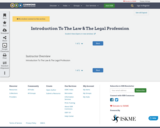
Introduction To The Law & The Legal Profession
- Subject:
- General Law
- Law
- Material Type:
- Case Study
- Author:
- Nikki Jacobson
- Date Added:
- 06/02/2022

Introduction To The Law & The Legal Profession
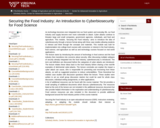
As technology becomes ever integrated into our food system and everyday life, our food industry and supply become ever more vulnerable to attack. Cyber attacks continue to threaten large and small companies, government agencies, individuals, and food and agriculture. This module, ‘Securing the Food Industry,’ aims to introduce the idea of cyberbiosecurity through a lecture format along with three case studies allowing students to interact and think through the concepts and materials. This module was built for implementation into college level courses with connection or interest in the food industry, food science, and agriculture as well as and technology courses focused on real world applications.
The lecture starts by introducing the amount of technology in food science and the food industry then transitions into concerns about security. After discussing multiple subtypes of security already integrated into the food industry, cyberbiosecurity is introduced. The term and definition are discussed before the categories of cyber attacks are introduced. The lecture relates these ideas back to the food industry before sharing a few real-life examples of detrimental cyber-attacks. The lecture concludes are explain the impact a cyber attack can cause, who is responsible for preventing and recovering from these attacks, as well as suggested practices to reduce vulnerabilities. Three theoretical but realistic case studies with discussion questions follow the lecture. These studies were written to act as small group discussion starters but could be used for whole class discussion, individual writing assignments, or other applications.
A list of additional resources can be found with the course material. This list provides a small sampling of additional documents which discuss cyberbiosecurity. The resources listed at the end of the lecture are not included in the additional resources document but also provide helpful information in the exploration and understanding of cyberbiosecurity. Food science resources are also included in this document to provide additional background around the food industry portion of this course material.
Securing the Food Industry is an open educational resource (OER). Instructors reviewing, adopting, or adapting the module should indicate their interest at https://forms.gle/orFRGhYs8owBP7gD6.
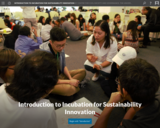
Innovation and incubation are no longer limited to technological or science-based business perspective, rather, there has been a move towards social innovations and incubators focused on supporting ventures to develop these types of innovations. These innovations are important for society as they focus on public interest and common good and in strengthening the bonds of trust between citizens. They also find new solutions and approaches to address sustainability issues within societies.
Ventures that look to develop social innovations are often driven by social entrepreneurs, who form social ventures (SEs) and they often work through a market based approach. They take on the risks and efforts to create a positive change in society. As such, their main goal is not profit, rather to implement widespread improvements in society.
This e-study will guide readers through the incubation process, explore the concept of social innovation and the situation in Hong Kong as well as how incubators fit in with the greater social innovation ecosystem and contribute to sustainability.
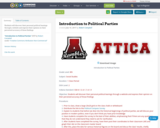
Students will discover their personal political leanings through a website and express their opinion on their perceived accuracy of those findings
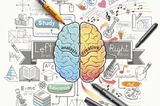
This course introduces students to the scientific study of the mind and behavior and to the applications of psychological theory to life. Topics include: research methods; biopsychology; lifespan development; memory; learning; social psychology; personality; and psychological health and disorders. This course will establish a foundation for subsequent study in psychology. Resources include: Video, Articles, and Class Activities.

Infuse your course with immigration/multiculturalism OER activities.

In this 5 minute video, the teacher is establishing a classroom culture for doing science at the beginning of the year in Kindergarten. She engages students in collecting temperature data daily, while simultaneously supporting students in understanding how to measure temperature, the importance of doing it at the same time every day (fair test), and how temperature affects students' daily lives.
This video was produced for the NSTA webinar series, Teaching NGSS in K-5 (Zembal-Saul, Starr & Renfrew, 2014-15).
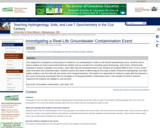
This assignment is designed as a final project for students in my undergraduate 3 credit non lab elective geohydrology course. Students work in pairs to analyze an actual, local contaminated site (Delphi) and use raw data from consulting reports (boring logs, water levels, chemical water analyses) to prepare a geologic cross-section, water table map and contaminant plume map. Students are assigned different lines of cross section, water level dates and contaminant types. Students examine the variety of different figures and maps to better characterize hydrogeologic and water quality conditions over the entire site and answer some assigned questions. This project is an opportunity for students to apply skills they learned in the course (contouring, groundwater flow) to investigate an existing groundwater contamination event. It also provides the kind of "practical" experience the students can highlight in a job interview.
Key words: Groundwater contamination, case study, TCE
(Note: this resource was added to OER Commons as part of a batch upload of over 2,200 records. If you notice an issue with the quality of the metadata, please let us know by using the 'report' button and we will flag it for consideration.)
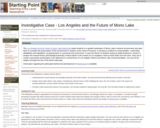
The Los Angeles and the Future of Mono Lake WebQuest leads students in a guided exploration of Mono Lake's extreme environment and asks them to consider the preservation of this environment in relation to the needs of humans.
(Note: this resource was added to OER Commons as part of a batch upload of over 2,200 records. If you notice an issue with the quality of the metadata, please let us know by using the 'report' button and we will flag it for consideration.)

Basic Interviewing for Social Workers
FIRST CWS INVESTIGATIVE INTERVIEW: CRAIG PRICE
Possible Physical Abuse & Witnessing Family Violence Referral, 7 year old male
Length 10:26
Learning Objectives:
• Demonstrate developmental language comprehension check by SW prior to interview;
• Demonstrate checking the child’s suggestibility;
• Demonstrate engagement and rapport building;
• Demonstrate infusing trauma-informed practice points into the interview process;
• Demonstrate gathering information about trauma specific issues which may exist with this child, family, or environment.
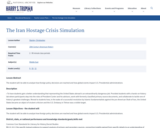
To have students gain a better understanding that representing the United States abroad is an extraordinarily dangerous job. This lesson provides students with a hands-on history lab where participants step into the roles of President Carter and his advisors, work with formerly classified primary source documents, and collaborate to tackle one of history’s greatest challenges. Reveal to students how, in the wake of a successful 1979 revolution by Islamic fundamentalists against the pro-American Shah of Iran, the United States became an object of virulent criticism and the U.S. Embassy in Tehran was a visible target.

Boston strives for carbon neutrality by 2050, but faces hurdles with its reliance on fossil fuels. Buildings contribute most to emissions, driven by electricity and natural gas. Decarbonizing the grid and eliminating natural gas are vital for success. While progress has been made, meeting targets remains uncertain. Priorities include electrifying buildings, local energy planning, coastal resilience, and climate justice.

The United States government has a long history of supporting energy-related research and development (RD&D). However, federal support for civilian energy RD&D has declined significantly since the creation of the Department of Energy (DOE). Recent spending decisions prioritize fossil fuels over clean energy, hindering efforts to address the carbon problem and decarbonize our society.
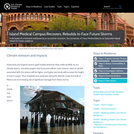
In the wake of a hurricane and beset by an economic recession, the University of Texas Medical Branch on Galveston Island rebuilt for future resilience.
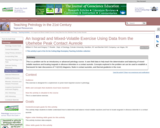
This is a problem set designed to be used in an introductory or advanced petrology course, either as an exercise in conjunction with a laboratory assignment or as a stand-alone assignment. It could also be easily modified to be suitable for an exam exercise. The problem set uses field data to help teach the determination and balancing mixed-volatile reactions and locating isograds in siliceous dolomites in a contact aureole. Concepts explored in the problem set can be used to establish a framework for later discussions of T-X(CO2) diagrams, fluids in contact aureoles, and thermal gradients in the crust.
Note that mapped assemblages have been somewhat simplified from the field data (Roselle 1997). Where brucite was observed in the aureole it has been mapped as periclase. All of the assemblages are '3-phase' except for the mapped assemblages of Dol+ Qtz+ Cal+ Tr. This assemblage can be the focus of a question regarding crossing tie-lines and the 'quartz-out' isograd. To simplify the exercise the open triangle symbols can be filled, making the assemblage Dol+ Cal+ Tr. Any of the questions below can be made a bit more straightforward by including more guiding text (or the reverse), depending on the preparation of the students.
The Ubehebe aureole is an excellent locality to use to teach metamorphic reactions in siliceous dolomites (Peck, 2003), and has the advantage of the availability of supplementary data for other exercises (mineral textures, Roselle, 1997; Roselle et al., 1997; stable isotopes, Roselle et al., 1999; remote sensing, Kozak et al., 2004). Ubehebe is also a case study discussed in Best's Igneous and Metamorphic Petrology (2003). Winter's (2001) textbook discusses the Alta contact aureole. A similar problem set could be easily made by using data from Alta (Cook and Bowman, 2000).
(Note: this resource was added to OER Commons as part of a batch upload of over 2,200 records. If you notice an issue with the quality of the metadata, please let us know by using the 'report' button and we will flag it for consideration.)

Energy poverty is a significant concern in the United States, with over one in four households experiencing insecurity. Government programs like LIHEAP and WAP aim to address this issue, but funding levels often fall short of the need. A more comprehensive approach is necessary, considering the impact on well-being and addressing racial and socioeconomic disparities.

Concerns about wind turbines causing bird deaths are often exaggerated. Data shows that bird fatalities from wind turbines are relatively low compared to other causes like domestic cats and building collisions. When assessing the relative impact on bird mortality, wind energy appears less harmful than many other forms of electricity generation.
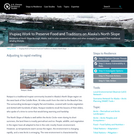
Residents of North Slope Borough, Alaska, look to solar-powered ice cellars and other strategies to preserve their traditional whaling lifestyle.

What should you do if you're lucky enough to find an artifact? In this resource, JPPM Educator Kenny walks you through a simple 4-step process for making sure your find gets taken care of. Available in video and text form, this resource also includes connections for instructors to Maryland State Social Studies Frameworks for grades 2 and 3 on Civic Engagment and Civic Virtue.

JSA Activity Demo